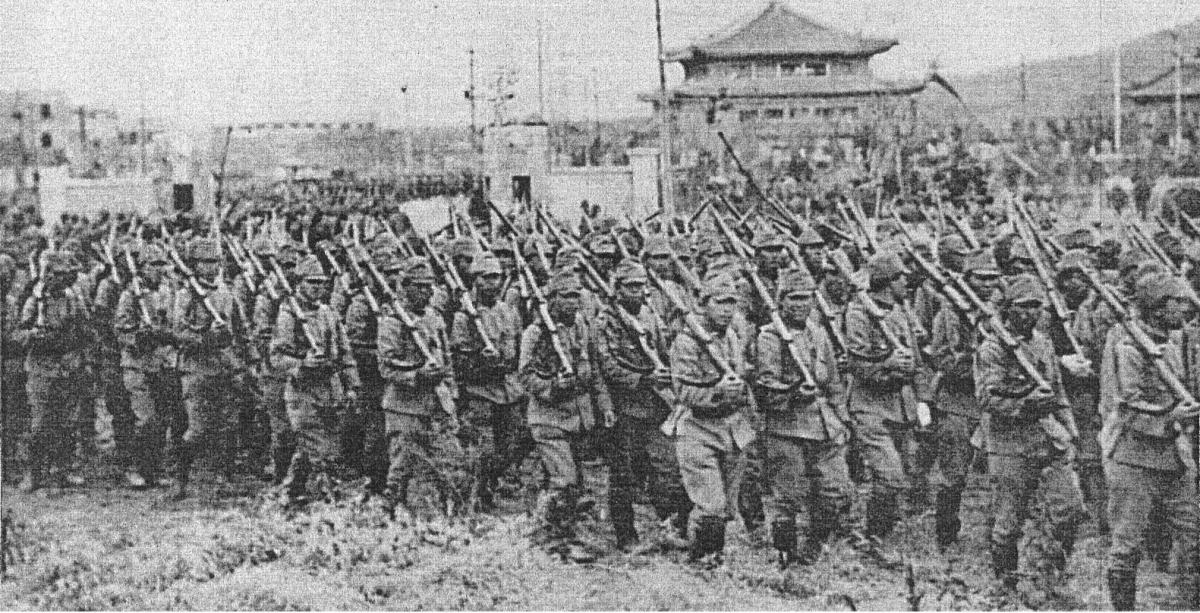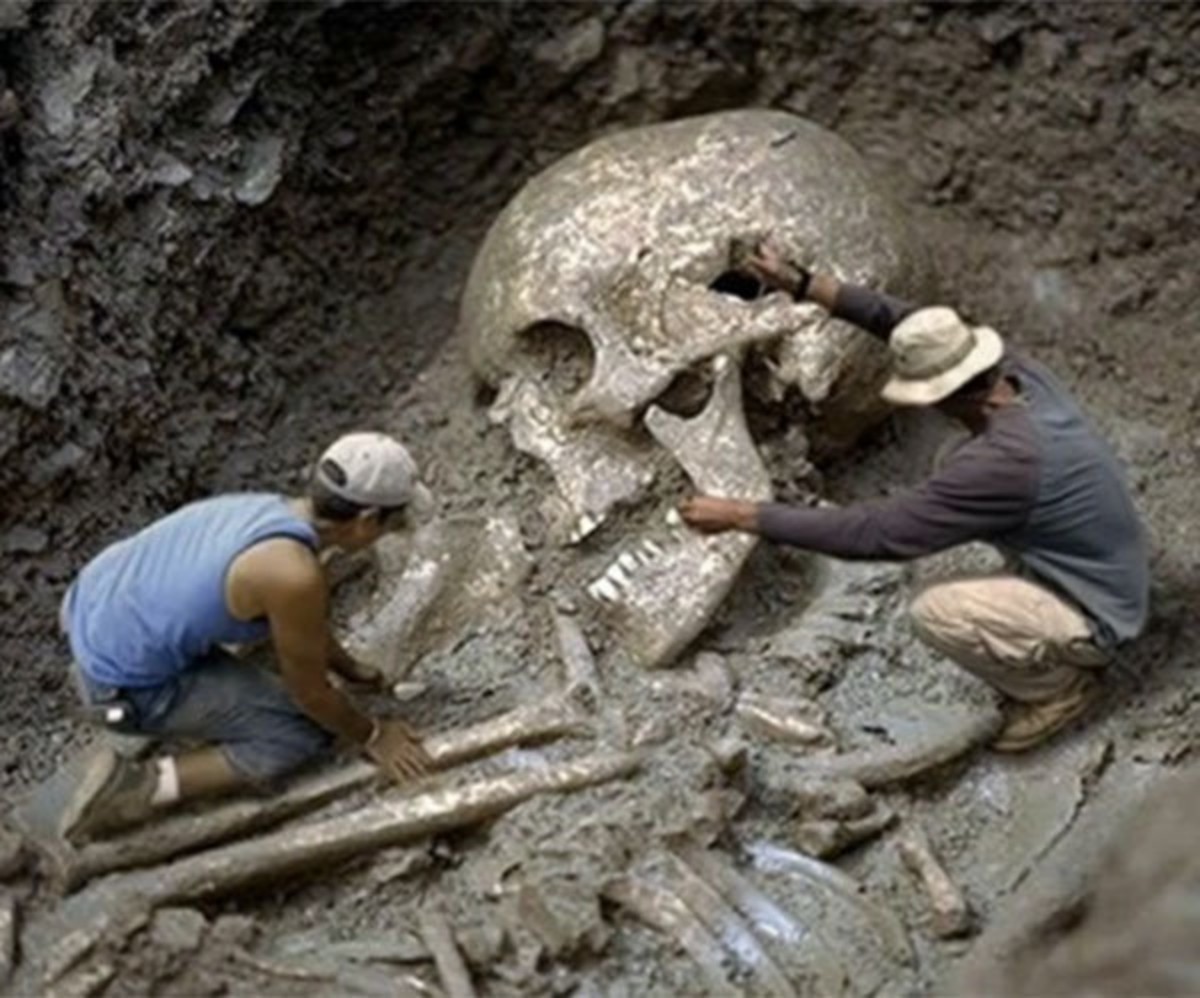World War 2 – Did it begin at Pearl Harbor?
When and where did WW2 begin?
The likely answer from Americans – 7 December 1941; Pearl Harbor, Hawaii, Japan attacked the US
The likely answer from Europeans – 1 September 1939; Wieluń, Poland, Germany attacked Poland (Germany attacked Westerplatte 8 minutes later; and then attacked the USSR in June 1941)
The likely answer from East Asians – 7 July 1937, Lugou Bridge (Marco Polo Bridge), China, Japan attacked China
Strangely, almost no one is aware of the answer that may have the strongest claim to validity – 8 December 1941, Kota Bharu, Japan attacked British Malaya.
Why should the attack on Pearl Harbor – instead of the simultaneous attack on Kota Bharu – be considered the event that made it a world war?
Japan had launched a full-scale invasion of China in 1937
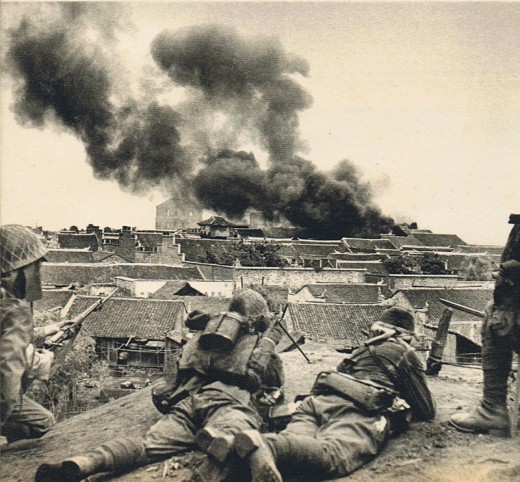
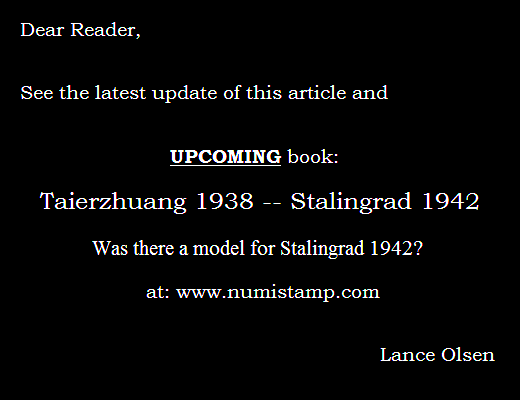
eBook available NOW!
Insight into a blind spot of WW2 Series (Volume 1)
Taierzhuang 1938 – Stalingrad 1942
ISBN 9780983843573
ASIN: B00MMGA9IS
http://www.amazon.com/dp/B00MMGA9IS
Amazon Price: $9.99
List Price: $9.99
Germany had invaded the USSR in June 1941 – its troops had stormed to within 16 kilometers of the Kremlin, Moscow, on 5 December 1941
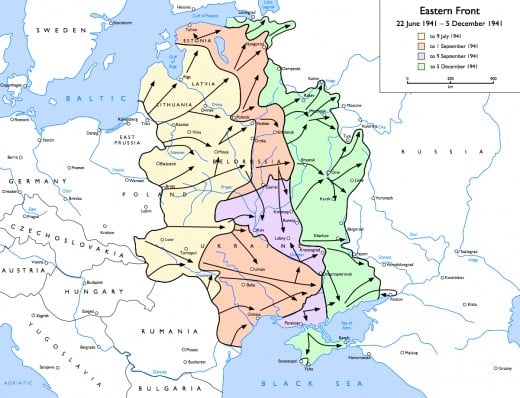
Japan had bombarded the beach it intended to land its troops on, near Kota Bharu, British Malaya – 85 minutes before dropping its first bomb upon Pearl Harbor
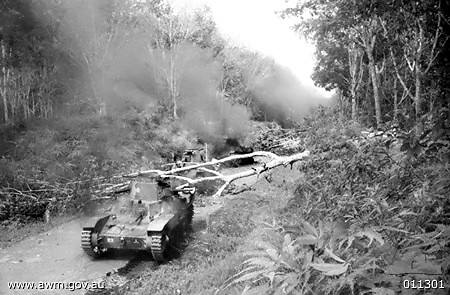
Japan attacks Pearl Harbor, 7 December 1941
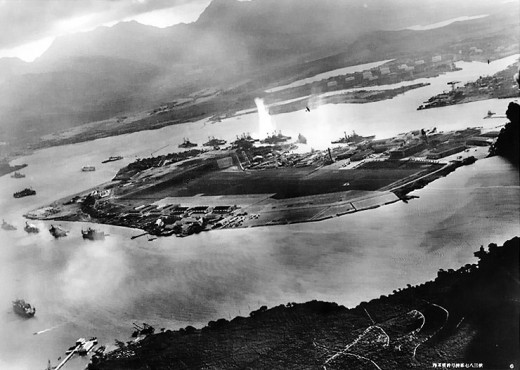
It became a world war – the Second World War – when Japan attacked Kota Bharu (Malaya, Eastern Hemisphere, British territory) and Pearl Harbor (Western Hemisphere, US territory). The attacks brought Britain and the USA into the war in Asia. It meant the Axis were battling the Allies in both hemispheres – making it a worldwide war.
The dates of the attacks mislead one to the conclusion that Pearl Harbor – which was attacked on 7 December 1941 – was attacked first, and Kota Bharu – which was attacked on 8 December 1941 – was attacked one day later.
The difference in dates is a result of the International Date Line being located between Pearl Harbor and Kota Bharu. Kota Bharu being in the Eastern Hemisphere at longitude 102°E is 8 hours ahead of GMT, and Pearl Harbor being in the Western Hemisphere at 158°W is 10 hours behind GMT. Separated by 260° of longitude, the two are in time zones 18 hours apart. At the time of the attacks, which were planned to be simultaneous, it was already 8 December 1941 at Kota Bharu – but still 7 December 1941 at Pearl Harbor.
In July 1937, Japan had launched a full-scale war to invade and conquer China. And then realized that to wage that war it needed the war material available from European-controlled territories to the south of China – especially, oil from the Netherlands East Indies, rubber and tin from British Malaya, etc.
Initially, Japan had taunted China by boasting to the world that Japan could capture Shanghai within 3 days and conquer the whole of China within 3 months. However, the capture of Shanghai alone had required more than 3 months (Battle of Shanghai: 13 August 1937 – 26 November 1937). By mid-1940 it had become crystal clear to all that Japan was stalemated and could not win its war in China.
Meanwhile, in Europe, Germany had conquered the Netherlands by the 14 May 1940, France by 25 June 1940, and besieged Britain since 10 July 1940. This meant that the territories to the south of China – territories of the Netherlands, France and the British – would be weakly defended, if defended at all. This emboldened Japan to break the stalemate in China by invading Tonkin (or Tongkin, or Tongking) in northern French Indo-China to the south of China.
Japan invaded Tonkin on 22 September 1940 to cut-off the route of supplies to China from Haiphong (in Tonkin) to Kunming (in China). Japan calculated that cutting off the supplies to China's military would result in Japan's military having the upper hand and thereby break the stalemate in China.
When Japan extended its war in China into French Indo-China on 22 September 1940 the US became alarmed for the security of the Philippines (a US territory). Consequently, on 25 September 1940, to reduce Japan’s war-making ability – the US reduced its exports of oil to Japan, and then on 16 October 1940 completely stopped all its exports of iron & steel scrap to Japan. The US was, then, the only important source of iron & steel scrap worldwide. In 1937 and again in 1939, Japan produced 7 million tons of steel annually – much of it from 2 million tons of iron & steel scrap imported annually from the US. Hence, the embargo hamstrung Japan’s steel industry and thus its war-making ability.
Japan, Germany, and Italy made the Tripartite Pact (also called the Axis Pact) on 27 September 1940. The situation prevailing in the world at that time made it clear that the purpose of the Pact was to have the US remain neutral and deter the US from:
- aiding the targets of the Axis
- waging war against the Axis
If the US attacked Japan in Asia – the US would also be at war with Germany in Europe. If the US joined the British to fight Germany in Europe, the US would also have to fight Japan in Asia. The Pact meant the US had to:
- either remain neutral
- or fight a war on two fronts
Germany launched an immense full-scale invasion of the USSR (Operation Barbarossa) on 22 June 1941 – which forced the USSR to direct all its military might against Germany in the west. This had unexpected results in the east.
In the east, Japan decided on 2 July 1941 to seize the weakly defended territories of the Netherlands, France and the British; and in anticipation of that – Japan invaded Cochin-China in southern French Indo-China on 24 July 1941 to position its military to effect that seizure. The troops that invaded Cochin-China were transferred from Japan’s army in China’s north-east which bordered the east of the USSR (which was preoccupied with battling Germany’s Operation Barbarossa in the west).
Japan’s invasion of Cochin-China confirmed US fears concerning the security of the:
- Philippines (which was US territory)
- supply to the US from its principal sources of several strategically important materials such as rubber from French Indo-China, tin from British Malaya, quinine from the Netherlands East Indies, coconut shells and manila fiber from the Philippines
Within the US there were either no sources, or severely inadequate sources, of 14 "strategic materials" required by US industry and the US military. The territories of the Netherlands, France, the British, and the US, to the south of China, were the principal source of 5 such materials – and the sole source of 4 of the 5. A hostile Japan seizing those territories meant the US being cut-off from the sole source of 4 "strategic materials" which the US required for its own defense.
Consequently, on 26 July 1941, to curb Japan – the US froze all of Japan’s assets in the US, in effect, ending all its trade with Japan, and barred Japan’s ships from passing through the Panama canal. The British did the same on the same day and the Netherlands did the same on 28 July 1941. Then, on 2 August 1941, all US oil exports to Japan not yet embargoed were embargoed. The British and the Netherlands East Indies embargoed exports from their territories (those to the south of China) to Japan. This meant Japan being cut-off from 90% of its oil supply.
Negotiations failed because Japan’s attempt to conquer China clashed irreconcilably with US interests in China. On 26 November 1941, the US handed its “Hull Note” to Japan. One of the points of the “Hull Note” required Japan to “withdraw all military, naval, air and police forces from China and from Indochina” for normal trade between the US and Japan to resume. Japan viewed the “Hull Note” as an ultimatum meaning – Japan had to withdraw, immediately and completely, from China or be at war with the US.
Withdrawal from China meant all that blood and treasure – which Japan had expended since 1931 (Mukden Incident) in invading China – being a waste. Japan’s army alone had already suffered 180,000 fatalities and 425,000 casualties in invading China since 1931. Japan’s annual military expenses had grown from 434 million yen in 1931 to 7,266 million yen in 1940; from 1937 to 1940 more than 71% of Japan’s budget was spent on military expenses. Japan’s leaders concluded that both its military and people would violently oppose withdrawal from China and therefore – chose war.
By September 1941, embargoes and consumption had reduced Japan's reserves of oil to 50 million barrels. Japan’s navy alone consumed 2,900 barrels of oil every hour – and would consume 50 million barrels within 24 months even if Japan’s army, merchant ships, industry and population were denied oil completely. This meant that Japan had to secure the supply of the oil it needed or be totally powerless – militarily and economically – within 2 years. Time was of the essence.
Securing oil supplies from the Netherlands East Indies – before Japan became powerless to do so – became of paramount importance to Japan. Oil was vital to Japan’s industry and Japan’s ability to wage war upon China. At that time, the Netherlands East Indies were the fourth-largest producer of oil in the world. In 1935 Japan imported 3.68 million tons of oil (mostly from the US) while the Netherlands East Indies exported 5.14 million tons of oil. Hence, the Netherlands East Indies were a prime target.
Between Japan and the oil of the Netherlands East Indies – were the British territories of Malaya (source of rubber and tin) and northern Borneo (also a source of oil) with strong British military forces, e.g., “Fortress Singapore” with its 12 coastal defence artillery batteries including five 15-inch (381 mm) caliber guns, 76,000 men, air & naval bases; these had to be attacked first – to prevent interference in Japan’s conquest of the Netherlands East Indies. Japan planned to begin the conquest of British Malaya by attacking Kota Bharu.
Also between Japan and the oil of the Netherlands East Indies – were the US-controlled Philippines with strong US military forces, e.g. 150,000 men, 2 cruisers, 23 modern submarines, Clark Air Base; these, too, had to be attacked first – to prevent interference in Japan’s conquest of the Netherlands East Indies.
The British military in Malaya and the US military in the Philippines had to be destroyed to prevent them from interfering with Japan’s attack on the Netherlands East Indies and – to prevent them from interfering with the anticipated flow of vitally needed supplies, especially oil, from the Netherlands East Indies to Japan.
Therefore, Japan planned a pincer movement through British Malaya and the US-controlled Philippines culminating in Java in the Netherlands East Indies.
But the US navy had a powerful fleet (8 battleships, 8 cruisers, 2 aircraft-carriers, etc.) based in Pearl Harbor which could interfere with Japan’s conquest of British Malaya, the US-controlled Philippines and the Netherlands East Indies. To prevent any interference from that – Japan decided it had to destroy, or at least cripple, the US navy fleet in Pearl Harbor at the same time that it attacked Kota Bharu.
In the planning of the attacks:
1. to attack Kota Bharu, British Malaya, was the principal decision – this decision was made first
2. to attack Pearl Harbor, USA, was a subsidiary decision – this decision was made after the first
The decision "...advance into the Southern Regions...no matter what obstacles may be encountered...we will not be deterred by...a war with England and America" (the Southern Regions meant British, US and Netherlands territories to the south of China) – was made in the Gozen Kaigi (御前会議 meaning: Imperial Conference) on 2 July 1941.
The decision on the timing – if Japan's demands via diplomacy/negotiations were not satisfied by 10 October 1941, Japan would "immediately decide to commence hostilities against the United States, Britain and the Netherlands" – was made in the Imperial Conference on 6 September 1941.
Japan’s decisions on 2 July and 6 September 1941 had unexpected results in the war in Europe. In late September 1941, a German journalist (Richard Sorge) spying in Japan for the USSR – informed the USSR that Japan would not attack the USSR in the east (because Japan had decided to “Strike South”). This enabled the USSR to rush 40 Siberian divisions from its borders in East-Asia to defend the USSR in Europe instead. These Siberian divisions entered the war in Europe on 5 December 1941 – just in time to repulse Germany's military from the outskirts of Moscow. At this juncture, the front-line between Germany and the USSR was less than 30 kilometres from the Kremlin. This was a pivotal event of WW2.
The decision to attack Pearl Harbor – was made in the Imperial Conference on 5 November 1941.
The invasion and conquest of British Malaya (starting near Kota Bharu) was the primary operation – the attack on the US Navy’s Pacific Fleet at Pearl Harbor being the secondary and supporting operation to prevent interference in the primary operation.
In actuality, the Japanese were forced to begin their bombardment of the troop landing area near Kota Bharu – 85 minutes before their planes dropped their first bomb on Pearl Harbor 10,800 kilometres to the east.
1. at 00:25 on 8 December 1941, Malayan local time – 06:25 on 7 December 1941, Hawaiian local time, Japan began the bombardment of the area it intended to land it troops on, near Kota Bharu in British Malaya
2. at 01:50 on 8 December 1941, Malayan local time – 07:50 on 7 December 1941, Hawaiian local time, Japan dropped the first bomb in its attack upon Pearl Harbor, USA
Within the 24 hours of the “Day of Infamy” – which was 7 December 1941 in Hawaii and 8 December 1941 in Malaya – Japan attacked Kota Bharu (in the Eastern Hemisphere) first, then Pearl Harbor (in the Western Hemisphere), followed by attacks on Singapore, Hong Kong and the Philippines, Guam, Wake and Midway some hours later.
Like Pearl Harbor, Midway – being at 177°W and 11 hours behind GMT – is in the Western Hemisphere. Some hours after the attack on Pearl Harbor, within the 24 hours of the “Day of Infamy” – Midway too was attacked when it was still 7 December 1941.
Japan's objective in landing troops near Kota Bharu was to capture – from its unprotected side – the "impregnable British Fortress of Singapore" 570 kilometres (as the crow flies) further south, at the very tip of the Indo-Chinese peninsula. Singapore had been fortified against being attacked by sea from the south but not against attack from land to the north of the island and was captured within 69 days.
Seventeen Japanese Navy bombers attacked Singapore – at 04:30 (local time) on 8 December 1941, killing 61 and wounding more than 700 – just 2 hours and 40 minutes after Japan dropped the first bomb in its attack upon Pearl Harbor.
Within 2 hours of bombing Singapore, Japan invaded the Philippines by landing a small force on BatanIsland (660 kilometres north of Manila) at dawn on 8 December 1941 and bombed Clark Air Base, a US base, in the Philippines at 30 minutes past noon (local time) the same day. The main attack fell upon Luzon on 22 December 1941 and the US forces in the Philippines surrendered on 8 May 1942.
Japan’s occupation of French Indo-China cut-off the route of supplies to China from Haiphong (in Tonkin) to Kunming (in China), but, there was one last route outside Japan’s control by which supplies were trickling into China – the Burma Road from Lashio (in British Burma) to Kunming (in Yunnan, China). China was paying for the trickle of supplies by exporting – via the Burma Road – tungsten to the US. China was the principal source of tungsten – a "strategic material" required by the US for its defense.
To cut-off the Burma Road to China, protect the flanks of its forces invading British Malaya, cut-off reinforcements from India to Singapore, seize resources such as oil, cobalt and rice – Japan invaded British Burma. The invasion began with an air-raid on Tavoy on 11 December 1941, Victoria Point was occupied on 15 December 1941, and the rest of British Burma by 20 May 1942.
Japan’s invasion of the Netherlands East Indies – a prime target of Japan’s “Strike South” – began with an attack on Tarakan (Borneo) at midnight 11–12 January 1942, and culminated in the surrender of the Netherlands East Indies at Kalijati (40 kilometres from Bandung) in West Java on 8 March 1942.
The attack on Pearl Harbor (US territory) was an air-raid of 90 minutes. The attack force was 354 warplanes supported by 56 warships. It killed 2,386; wounded 1,139; and sank 5 battleships and 13 other warships on the US side. Japan lost only 6 midget submarines, 29 warplanes, and 64 men.
The attack on British Malaya and Singapore was a full-scale invasion of 69 days. The attack force was 70,000 men, 568 warplanes and 200 tanks. It killed 15,000; wounded 10,000; and captured 160,000 men on the British side. Japan's casualties were 3,500 men killed and 6,150 wounded.
Kota Bharu is in Kelantan which had been a vassal state paying tribute to Siam (Thailand since 1939), its suzerain, until the Anglo-Siamese Treaty of 1909 made it British territory.
Pearl Harbor is in Hawaii which had been the sovereign Republic of Hawaii until it was annexed by the US and made a US territory – not a state of the US – in 1898 (Hawaii became a state of the US in 1959).
Japan believed that the US Navy’s Pacific Fleet based at Pearl Harbor would interfere in Japan’s attack on Malaya and the Philippines or, at the very least, rush to aid the US forces in the Philippines – this was an error of the greatest magnitude with the most immense ramifications.
Unbeknownst to Japan, in US strategic planning Rainbow 5 had superseded Plan Orange (or: Orange Plan). In US War Plan Orange, the US Navy’s Pacific Fleet was to rush 9,000 kilometres from Pearl Harbor to the Philippines to aid US forces under attack by Japan there. The change from Plan Orange to Rainbow 5 had started with a memo – which came to be known as the “Plan Dog” Memo – dated 12 November 1940 by Chief of Naval Operations Admiral Harold Raynsford Stark for the Secretary of the Navy and US President Roosevelt.
The memo pointed out:
I) “… jumping directly from Hawaii to the Philippines…has always been ruled out by responsible authorities as unsound from a military viewpoint.”
II) Four questions (A, B, C & D) with corresponding alternative plans; question D being – “Shall we direct our efforts toward an eventual strong offensive in the Atlantic as an ally of the British, and a defensive in the Pacific?...”
III) “Alternative (D) is likely to be the most fruitful for the United States…We might not long retain possession of the Philippines” [the “D” in “Alternative (D)” became the “Dog” in “Plan Dog”]
US and British military staff, meeting secretly, agreed on co-ordination in the ABC-1 (ABC = American-British-Canadian) accord (not an alliance) on 27 March 1941. ABC-1 became the basis of US “War Plan-Rainbow No. 5” (Rainbow 5) which outlined the objectives and missions of the US military if the US joined the war. “Alternative (D)” came to be known as Plan Dog which developed into ABC-1 and then Rainbow 5. The US, in effect, decided on 10 June 1941 to proceed on Rainbow 5 which culminated in the (defeat) “Germany First” or “Europe First” policy.
In the subsequent Arcadia Conference (22 December 1941 to 14 January 1942) between the US and the British, US President Roosevelt made it clear – at the outset – the US had decided, as British Prime Minister Churchill had proposed, that Germany must be defeated first and then Japan. This came to be known as (defeat) “Germany First” or “Europe First” and became the basis of US and British strategy in WW2.
Plan Dog, ABC-1 and Rainbow 5 all clarify and confirm, in US strategic plans, the Philippines were indefensible if Japan attacked it and the US Pacific Fleet would neither move from Pearl Harbor to defend the Philippines nor interfere with Japan’s attack on British Malaya and the Netherlands East Indies.
Japan planned to seize British Malaya, the US-controlled Philippines and the Netherlands East Indies, then establish a defensive perimeter stretching from the Kurile Islands south through Wake, the Marianas, the Carolines, and the Marshalls and Gilberts to Rabaul on New Britain, and then westward to north-western New Guinea to include all of the Netherlands East Indies, the Indo-Chinese peninsula and China. Japan planned to make its defensive perimeter impregnable to attack and force the US to accept the fait accompli in a negotiated settlement. This was the objective of Japan’s “Strike South” (the "Centrifugal Offensive" in US terminology) the First Phase in Japan’s extension of the war beyond China.
The Second Phase included plans to invade Australia, Alaska, Washington and Oregon but subsequent events made the Second Phase and eventual world conquest impossible.
The US Plan Rainbow 5 meant a US defensive perimeter stretching from Alaska to Hawaii and onto Panama – which did not overlap Japan’s planned defensive perimeter.
Since the US had decided that the Philippines were indefensible, that the US Pacific Fleet would not defend the Philippines, and both the US and Japan had planned defensive perimeters which did not overlap – Japan could have seized British Malaya, the US-controlled Philippines and the Netherlands East Indies without interference from the US Pacific Fleet. Subsequently, both Japan and the US would be – by their own plans – on the defensive behind their own planned defensive perimeters.
Isolationists who believed that it was best for the US to isolate itself from the wars overseas had been dominant in the US. Japan’s attack on Pearl Harbor silenced the isolationists by making it clear that if the US did not go to war – war would come to it, and had come to it. The US public saw the attack as unprovoked and dastardly. The spectacular damage and heavy loss of life galvanized US public opinion to wage war upon Japan until it surrendered unconditionally.
Japan’s premise that the US Pacific Fleet would rush to aid the US forces under attack in the Philippines – the reason Japan attacked Pearl Harbor – was in error. It was an error of the greatest magnitude.
Japan’s attack upon Pearl Harbor galvanized US public opinion in a way that made it impossible for the US to be purely on the defensive behind its planned defensive perimeter and accept any negotiated settlement that Japan had planned or would proffer. The ease of Japan’s success in its attacks on British Malaya, Pearl Harbor, the US-controlled Philippines, and the Netherlands East Indies aggravated Japan’s “Victory Disease” (which had started with the Mukden Incident of 1931 in China) and it decided to move its defensive perimeter outwards – instead of even attempting to negotiate a settlement based on its own original planned defensive perimeter.
Rainbow 5 meant the US being on the offensive in the Atlantic while being on the defensive in the Pacific. Japan’s attack on Pearl Harbor provoked the US to launch the Doolittle Raid (18 April 1942) on Tokyo and other targets in Japan, fight the Battles of Coral Sea (4 – 8 May 1942) and Midway (4 – 7 June 1942), and launch the Guadalcanal Campaign on 7 August 1942, all in the Pacific – before the first major US offensive in the Atlantic in November 1942 when the US military, together with the British, invaded French (Vichy) North Africa.
The attacks on British and US territories brought Britain (a country in Europe), and the USA (a country in the Americas) – into the war in Asia. The USA – a country in the Western Hemisphere – was now at war in the Eastern Hemisphere. The Axis were now battling the Allies in both hemispheres – making it a worldwide war; it had become a world war – the Second World War.
When Japan invaded China at Lugou Bridge (Marco Polo Bridge) on 7 July 1937, and when Germany invaded Poland on 1 September 1939 at Wieluń – the wars that followed were separate wars and remained separate wars.
But on the “Day of Infamy” the separate wars in Asia and Europe merged into a worldwide war – being fought in two principal theaters of war:
1. East Asia, South-East Asia & Pacific Ocean
2. Europe, North Africa & Atlantic Ocean
Considering the principal belligerents of WW2 – on the “Day of Infamy” – in theater 1, Japan versus China became Japan versus China, the British and the US; in theater 2, Germany and Italy versus the British and the USSR became Germany and Italy versus the British, the USSR and the US.
Japan’s attacks on the British and the US in Asia forced both the British and the US to fight a two-front war which meant that if the British deployed more of its military on one front – it had less of its military to deploy on the other front. And the same applied to US military deployments. Therefore, the wars in Europe and Asia became interrelated and interdependent.
The attack on British Malaya, starting near Kota Bharu, was the first of the Japanese attacks on the Day of Infamy. As has been clarified, the attack on British Malaya was the primary operation – the attack on Pearl Harbor being the secondary and supporting operation to prevent interference in the primary operation.
Without the primary operation (the attack on British Malaya) – the supporting operation (the attack on Pearl Harbor) is unnecessary as it would have nothing to support.
If Japan's attacks upon the British and the US on 7/8 December 1941 are to be considered the start of World War 2 – then logic dictates that the first attack is the start.
That first attack was at 00:25 on 8 December 1941, Malayan time (06:25 on 7 December 1941, Hawaiian time) when Japan began the bombardment of the area it intended to land it troops on, near Kota Bharu in British Malaya.
Pearl Harbor, US territory, was bombed 85 minutes later at 01:50 on 8 December 1941, Malayan time (07:50 on 7 December 1941, Hawaiian time).
Note: Kota is also spelled as Kotah, or Khota; Bharu is also spelled as Baru, or Bahru, or Baharu
Today, there are national and international entities that feel compelled to acquire, or impose upon others – by force of arms, or any other means (e.g., stealth, infiltration, deception, etc), what they feel entitled to by race or – by belief. Those who do not learn from history are doomed to repeat it!
World War 2 – understand it within the hour
- World War 2 -- understand it within the hour
1.Who fought the war? 2.Why was it fought? 3.Who won? 4.Does it affect us today? You need to know the answers to these questions within the hour to properly complete an assignment, an article, a webpage, or to win an argument
World War 2 – What difference did China make?
- The "Greater East Asia War" and World War 2
What difference did China make to WW2? Had Japan deployed, or been able to deploy, the major portion of its military against the other Allied Powers instead of China -- WW2 would have progressed on a different timeline and developed different results
Taierzhuang 1938 -- Stalingrad 1942-1943
- Taierzhuang 1938 -- Stalingrad 1942-1943
A militarily powerful country invades a very much larger country to seize territory. The invader has had an almost unbroken string of impressive victories...Are the similarities just coincidence or was Taierzhuang the model for Stalingrad?

